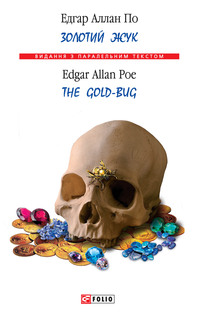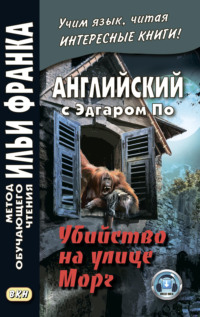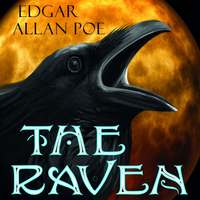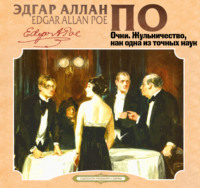 полная версия
полная версияThe Complete Stories of Edgar Allan Poe
Now, my dear friend, I do assure you, most positively, that I represent this matter fairly, on the soundest authority; and you can easily understand how a notion so absurd on its very face must have operated to retard the progress of all true knowledge – which makes its advances almost invariably by intuitive bounds. The ancient idea confined investigation to crawling; and for hundreds of years so great was the infatuation about Hog especially, that a virtual end was put to all thinking properly so called. No man dared utter a truth to which he felt himself indebted to his Soul alone. It mattered not whether the truth was even demonstrably a truth, for the bullet-headed savans of the time regarded only the road by which he had attained it. They would not even look at the end. “Let us see the means,” they cried, “the means!” If, upon investigation of the means, it was found to come neither under the category Aries (that is to say Ram) nor under the category Hog, why then the savans went no farther, but pronounced the “theorist” a fool, and would have nothing to do with him or his truth.
Now, it cannot be maintained, even, that by the crawling system the greatest amount of truth would be attained in any long series of ages, for the repression of imagination was an evil not to be compensated for by any superior certainty in the ancient modes of investigation. The error of these Jurmains, these Vrinch, these Inglitch, and these Amriccans, (the latter, by the way, were our own immediate progenitors,) was an error quite analogous with that of the wiseacre who fancies that he must necessarily see an object the better the more closely he holds it to his eyes. These people blinded themselves by details. When they proceeded Hoggishly, their “facts” were by no means always facts – a matter of little consequence had it not been for assuming that they were facts and must be facts because they appeared to be such. When they proceeded on the path of the Ram, their course was scarcely as straight as a ram’s horn, for they never had an axiom which was an axiom at all. They must have been very blind not to see this, even in their own day; for even in their own day many of the long-“established” axioms had been rejected. For example – “Ex nihilo nihil fit;” “a body cannot act where it is not;” “there cannot exist antipodes;” “darkness cannot come out of light” – all these, and a dozen other similar propositions, formerly admitted without hesitation as axioms, were, even at the period of which I speak, seen to be untenable. How absurd in these people, then, to persist in putting faith in “axioms” as immutable bases of Truth! But even out of the mouths of their soundest reasoners it is easy to demonstrate the futility, the impalpability of their axioms in general. Who was the soundest of their logicians? Let me see! I will go and ask Pundit and be back in a minute… … … …. Ah, here we have it! Here is a book written nearly a thousand years ago and lately translated from the Inglitch – which, by the way, appears to have been the rudiment of the Amriccan. Pundit says it is decidedly the cleverest ancient work on its topic, Logic. The author (who was much thought of in his day) was one Miller, or Mill; and we find it recorded of him, as a point of some importance, that he had a mill-horse called Bentham. But let us glance at the treatise!
Ah! – “Ability or inability to conceive,” says Mr. Mill, very properly, “is in no case to be received as a criterion of axiomatic truth.” What modern in his senses would ever think of disputing this truism? The only wonder with us must be, how it happened that Mr. Mill conceived it necessary even to hint at anything so obvious. So far good – but let us turn over another page. What have we here? – “Contradictories cannot both be true – that is, cannot co-exist in nature.” Here Mr. Mill means, for example, that a tree must be either a tree or not a tree – that it cannot be at the same time a tree and not a tree. Very well; but I ask him why. His reply is this – and never pretends to be anything else than this – “Because it is impossible to conceive that contradictories can both be true.” But this is no answer at all, by his own showing; for has he not just admitted as a truism that “ability or inability to conceive is in no case to be received as a criterion of axiomatic truth?”
Now I do not complain of these ancients so much because their logic is, by their own showing, utterly baseless, worthless and fantastic altogether, as because of their pompous and imbecile proscription of all other roads of Truth, of all other means for its attainment than the two preposterous paths – the one of creeping and the one of crawling – to which they have dared to confine the Soul that loves nothing so well as to soar.
By the by, my dear friend, do you not think it would have puzzled these ancient dogmaticians to have determined by which of their two roads it was that the most important and most sublime of all their truths was, in effect, attained? I mean the truth of Gravitation. Newton owed it to Kepler. Kepler admitted that his three laws were guessed at – these three laws of all laws which led the great Inglitch mathematician to his principle, the basis of all physical principle – to go behind which we must enter the Kingdom of Metaphysics. Kepler guessed – that is to say imagined. He was essentially a “theorist” – that word now of so much sanctity, formerly an epithet of contempt. Would it not have puzzled these old moles too, to have explained by which of the two “roads” a cryptographist unriddles a cryptograph of more than usual secrecy, or by which of the two roads Champollion directed mankind to those enduring and almost innumerable truths which resulted from his deciphering the Hieroglyphics?
One word more on this topic and I will be done boring you. Is it not passing strange that, with their eternal prating about roads to Truth, these bigoted people missed what we now so clearly perceive to be the great highway – that of Consistency? Does it not seem singular how they should have failed to deduce from the works of God the vital fact that a perfect consistency must be an absolute truth! How plain has been our progress since the late announcement of this proposition! Investigation has been taken out of the hands of the ground-moles and given, as a task, to the true and only true thinkers, the men of ardent imagination. These latter theorize. Can you not fancy the shout of scorn with which my words would be received by our progenitors were it possible for them to be now looking over my shoulder? These men, I say, theorize; and their theories are simply corrected, reduced, systematized – cleared, little by little, of their dross of inconsistency – until, finally, a perfect consistency stands apparent which even the most stolid admit, because it is a consistency, to be an absolute and an unquestionable truth.
April 4. – The new gas is doing wonders, in conjunction with the new improvement with gutta percha. How very safe, commodious, manageable, and in every respect convenient are our modern balloons! Here is an immense one approaching us at the rate of at least a hundred and fifty miles an hour. It seems to be crowded with people – perhaps there are three or four hundred passengers – and yet it soars to an elevation of nearly a mile, looking down upon poor us with sovereign contempt. Still a hundred or even two hundred miles an hour is slow traveling, after all. Do you remember our flight on the railroad across the Kanadaw continent? – fully three hundred miles the hour – that was traveling. Nothing to be seen, though – nothing to be done but flirt, feast and dance in the magnificent saloons. Do you remember what an odd sensation was experienced when, by chance, we caught a glimpse of external objects while the cars were in full flight? Everything seemed unique – in one mass. For my part, I cannot say but that I preferred the traveling by the slow train of a hundred miles the hour. Here we were permitted to have glass windows – even to have them open – and something like a distinct view of the country was attainable… …. Pundit says that the route for the great Kanadaw railroad must have been in some measure marked out about nine hundred years ago! In fact, he goes so far as to assert that actual traces of a road are still discernible – traces referable to a period quite as remote as that mentioned. The track, it appears was double only; ours, you know, has twelve paths; and three or four new ones are in preparation. The ancient rails were very slight, and placed so close together as to be, according to modern notions, quite frivolous, if not dangerous in the extreme. The present width of track – fifty feet – is considered, indeed, scarcely secure enough. For my part, I make no doubt that a track of some sort must have existed in very remote times, as Pundit asserts; for nothing can be clearer, to my mind, than that, at some period – not less than seven centuries ago, certainly – the Northern and Southern Kanadaw continents were united; the Kanawdians, then, would have been driven, by necessity, to a great railroad across the continent.
April 5. – I am almost devoured by ennui. Pundit is the only conversible person on board; and he, poor soul! can speak of nothing but antiquities. He has been occupied all the day in the attempt to convince me that the ancient Amriccans governed themselves! – did ever anybody hear of such an absurdity? – that they existed in a sort of every-man-for-himself confederacy, after the fashion of the “prairie dogs” that we read of in fable. He says that they started with the queerest idea conceivable, viz: that all men are born free and equal – this in the very teeth of the laws of gradation so visibly impressed upon all things both in the moral and physical universe. Every man “voted,” as they called it – that is to say, meddled with public affairs – until, at length, it was discovered that what is everybody’s business is nobody’s, and that the “Republic” (so the absurd thing was called) was without a government at all. It is related, however, that the first circumstance which disturbed, very particularly, the self-complacency of the philosophers who constructed this “Republic,” was the startling discovery that universal suffrage gave opportunity for fraudulent schemes, by means of which any desired number of votes might at any time be polled, without the possibility of prevention or even detection, by any party which should be merely villainous enough not to be ashamed of the fraud. A little reflection upon this discovery sufficed to render evident the consequences, which were that rascality must predominate – in a word, that a republican government could never be anything but a rascally one. While the philosophers, however, were busied in blushing at their stupidity in not having foreseen these inevitable evils, and intent upon the invention of new theories, the matter was put to an abrupt issue by a fellow of the name of Mob, who took everything into his own hands and set up a despotism, in comparison with which those of the fabulous Zeros and Hellofagabaluses were respectable and delectable. This Mob (a foreigner, by the by), is said to have been the most odious of all men that ever encumbered the earth. He was a giant in stature – insolent, rapacious, filthy; had the gall of a bullock with the heart of a hyena and the brains of a peacock. He died, at length, by dint of his own energies, which exhausted him. Nevertheless, he had his uses, as everything has, however vile, and taught mankind a lesson which to this day it is in no danger of forgetting – never to run directly contrary to the natural analogies. As for Republicanism, no analogy could be found for it upon the face of the earth – unless we except the case of the “prairie dogs,” an exception which seems to demonstrate, if anything, that democracy is a very admirable form of government – for dogs.
April 6. – Last night had a fine view of Alpha Lyræ, whose disk, through our captain’s spy-glass, subtends an angle of half a degree, looking very much as our sun does to the naked eye on a misty day. Alpha Lyræ, although so very much larger than our sun, by the by, resembles him closely as regards its spots, its atmosphere, and in many other particulars. It is only within the last century, Pundit tells me, that the binary relation existing between these two orbs began even to be suspected. The evident motion of our system in the heavens was (strange to say!) referred to an orbit about a prodigious star in the centre of the galaxy. About this star, or at all events about a centre of gravity common to all the globes of the Milky Way and supposed to be near Alcyone in the Pleiades, every one of these globes was declared to be revolving, our own performing the circuit in a period of 117,000,000 of years! We, with our present lights, our vast telescopic improvements, and so forth, of course find it difficult to comprehend the ground of an idea such as this. Its first propagator was one Mudler. He was led, we must presume, to this wild hypothesis by mere analogy in the first instance; but, this being the case, he should have at least adhered to analogy in its development. A great central orb was, in fact, suggested; so far Mudler was consistent. This central orb, however, dynamically, should have been greater than all its surrounding orbs taken together. The question might then have been asked – “Why do we not see it?” – we, especially, who occupy the mid region of the cluster – the very locality near which, at least, must be situated this inconceivable central sun. The astronomer, perhaps, at this point, took refuge in the suggestion of non-luminosity; and here analogy was suddenly let fall. But even admitting the central orb non-luminous, how did he manage to explain its failure to be rendered visible by the incalculable host of glorious suns glaring in all directions about it? No doubt what he finally maintained was merely a centre of gravity common to all the revolving orbs – but here again analogy must have been let fall. Our system revolves, it is true, about a common centre of gravity, but it does this in connection with and in consequence of a material sun whose mass more than counterbalances the rest of the system. The mathematical circle is a curve composed of an infinity of straight lines; but this idea of the circle – this idea of it which, in regard to all earthly geometry, we consider as merely the mathematical, in contradistinction from the practical, idea – is, in sober fact, the practical conception which alone we have any right to entertain in respect to those Titanic circles with which we have to deal, at least in fancy, when we suppose our system, with its fellows, revolving about a point in the centre of the galaxy. Let the most vigorous of human imaginations but attempt to take a single step towards the comprehension of a circuit so unutterable! It would scarcely be paradoxical to say that a flash of lightning itself, traveling forever upon the circumference of this inconceivable circle, would still forever be traveling in a straight line. That the path of our sun along such a circumference – that the direction of our system in such an orbit – would, to any human perception, deviate in the slightest degree from a straight line even in a million of years, is a proposition not to be entertained; and yet these ancient astronomers were absolutely cajoled, it appears, into believing that a decisive curvature had become apparent during the brief period of their astronomical history – during the mere point – during the utter nothingness of two or three thousand years! How incomprehensible, that considerations such as this did not at once indicate to them the true state of affairs – that of the binary revolution of our sun and Alpha Lyræ around a common centre of gravity!
April 7. – Continued last night our astronomical amusements. Had a fine view of the five Neptunian asteroids, and watched with much interest the putting up of a huge impost on a couple of lintels in the new temple at Daphnis in the moon. It was amusing to think that creatures so diminutive as the lunarians and bearing so little resemblance to humanity, yet evinced a mechanical ingenuity so much superior to our own. One finds it difficult, too, to conceive the vast masses which these people handle so easily, to be as light as our own reason tells us they actually are.
April 8. – Eureka! Pundit is in his glory. A balloon from Kanadaw spoke us to-day and threw on board several late papers: they contain some exceedingly curious information relative to Kanawdian or rather Amriccan antiquities. You know, I presume, that laborers have for some months been employed in preparing the ground for a new fountain at Paradise, the Emperor’s principal pleasure garden. Paradise, it appears, has been, literally speaking, an island time out of mind – that is to say, its northern boundary was always (as far back as any records extend) a rivulet, or rather a very narrow arm of the sea. This arm was gradually widened until it attained its present breadth – a mile. The whole length of the island is nine miles; the breadth varies materially. The entire area (so Pundit says) was, about eight hundred years ago, densely packed with houses, some of them twenty stories high; land (for some most unaccountable reason) being considered as especially precious just in this vicinity. The disastrous earthquake, however, of the year 2050, so totally uprooted and overwhelmed the town (for it was almost too large to be called a village) that the most indefatigable of our antiquarians have never yet been able to obtain from the site any sufficient data (in the shape of coins, medals or inscriptions) wherewith to build up even the ghost of a theory concerning the manners, customs, &c. &c. &c., of the aboriginal inhabitants. Nearly all that we have hitherto known of them is, that they were a portion of the Knickerbocker tribe of savages infesting the continent at its first discovery by Recorder Riker, a knight of the Golden Fleece. They were by no means uncivilized, however, but cultivated various arts and even sciences after a fashion of their own. It is related of them that they were acute in many respects, but were oddly afflicted with monomania for building what, in the ancient Amriccan, was denominated “churches” – a kind of pagoda instituted for the worship of two idols that went by the names of Wealth and Fashion. In the end, it is said, the island became, nine-tenths of it, church. The women, too, it appears, were oddly deformed by a natural protuberance of the region just below the small of the back – although, most unaccountably, this deformity was looked upon altogether in the light of a beauty. One or two pictures of these singular women have, in fact, been miraculously preserved. They look very odd, very – like something between a turkey-cock and a dromedary.
Well, these few details are nearly all that have descended to us respecting the ancient Knickerbockers. It seems, however, that while digging in the centre of the emperor’s garden, (which, you know, covers the whole island), some of the workmen unearthed a cubical and evidently chiseled block of granite, weighing several hundred pounds. It was in good preservation, having received, apparently, little injury from the convulsion which entombed it. On one of its surfaces was a marble slab with (only think of it!) an inscription – a legible inscription. Pundit is in ecstasies. Upon detaching the slab, a cavity appeared, containing a leaden box filled with various coins, a long scroll of names, several documents which appear to resemble newspapers, with other matters of intense interest to the antiquarian! There can be no doubt that all these are genuine Amriccan relics belonging to the tribe called Knickerbocker. The papers thrown on board our balloon are filled with fac-similes of the coins, MSS., typography, &c. &c. I copy for your amusement the Knickerbocker inscription on the marble slab: —
This Corner Stone of a Monument to
The Memory of
GEORGE WASHINGTON,
Was laid with appropriate ceremonies
on the
19TH DAY OF OCTOBER, 1847,
The anniversary of the surrender of
Lord Cornwallis
to General Washington at Yorktown,
A. D. 1781,
Under the auspices of the
Washington Monument Association of
the city of New York.
This, as I give it, is a verbatim translation done by Pundit himself, so there can be no mistake about it. From the few words thus preserved, we glean several important items of knowledge, not the least interesting of which is the fact that a thousand years ago actual monuments had fallen into disuse – as was all very proper – the people contenting themselves, as we do now, with a mere indication of the design to erect a monument at some future time; a corner-stone being cautiously laid by itself “solitary and alone” (excuse me for quoting the great Amriccan poet Benton!) as a guarantee of the magnanimous intention. We ascertain, too, very distinctly, from this admirable inscription, the how, as well as the where and the what, of the great surrender in question. As to the where, it was Yorktown (wherever that was), and as to the what, it was General Cornwallis (no doubt some wealthy dealer in corn). He was surrendered. The inscription commemorates the surrender of – what? – why, “of Lord Cornwallis.” The only question is what could the savages wish him surrendered for. But when we remember that these savages were undoubtedly cannibals, we are led to the conclusion that they intended him for sausage. As to the how of the surrender, no language can be more explicit. Lord Cornwallis was surrendered (for sausage) “under the auspices of the Washington Monument Association” – no doubt a charitable institution for the depositing of corner-stones. – But, Heaven bless me! what is the matter? Ah, I see – the balloon has collapsed, and we shall have a tumble into the sea. I have, therefore, only time enough to add that, from a hasty inspection of the fac-similes of newspapers, &c. &c., I find that the great men in those days among the Amriccans, were one John, a smith, and one Zacchary, a tailor.
Good bye, until I see you again. Whether you ever get this letter or not is a point of little importance, as I write altogether for my own amusement. I shall cork the MS. up in a bottle, however, and throw it into the sea.
Yours everlastingly,
PUNDITA.
THE END
Hop-Frog Or The Eight Chained Ourang-Outangs (1850)
I never knew any one so keenly alive to a joke as the king was. He seemed to live only for joking. To tell a good story of the joke kind, and to tell it well, was the surest road to his favor. Thus it happened that his seven ministers were all noted for their accomplishments as jokers. They all took after the king, too, in being large, corpulent, oily men, as well as inimitable jokers. Whether people grow fat by joking, or whether there is something in fat itself which predisposes to a joke, I have never been quite able to determine; but certain it is that a lean joker is a rara avis in terris.
About the refinements, or, as he called them, the “ghosts” of wit, the king troubled himself very little. He had an especial admiration for breadth in a jest, and would often put up with length, for the sake of it. Over-niceties wearied him. He would have preferred Rabelais’s “Gargantua,” to the “Zadig” of Voltaire: and, upon the whole, practical jokes suited his taste far better than verbal ones.
At the date of my narrative, professing jesters had not altogether gone out of fashion at court. Several of the great continental “powers” still retained their “fools,” who wore motley, with caps and bells, and who were expected to be always ready with sharp witticisms, at a moment’s notice, in consideration of the crumbs that fell from the royal table.
Our king, as a matter of course, retained his “fool.” The fact is, he required something in the way of folly – if only to counterbalance the heavy wisdom of the seven wise men who were his ministers – not to mention himself.
His fool, or professional jester, was not only a fool, however. His value was trebled in the eyes of the king, by the fact of his being also a dwarf and a cripple. Dwarfs were as common at court, in those days, as fools; and many monarchs would have found it difficult to get through their days (days are rather longer at court than elsewhere) without both a jester to laugh with, and a dwarf to laugh at. But, as I have already observed, your jesters, in ninety-nine cases out of a hundred, are fat, round and unwieldy – so that it was no small source of self-gratulation with our king that, in Hop-Frog (this was the fool’s name,) he possessed a triplicate treasure in one person.









